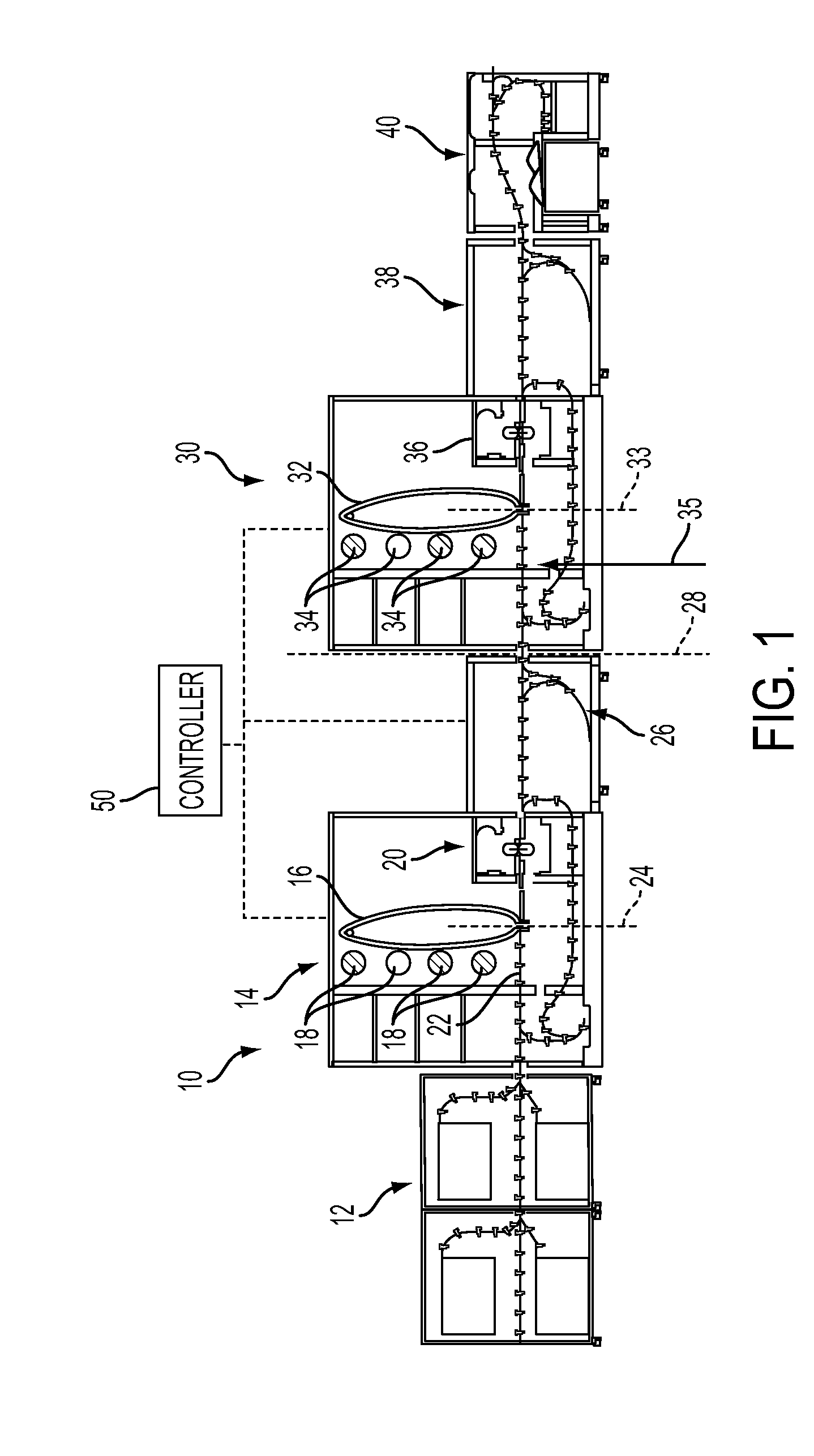Controlling sheet registration in a digital printing system
a digital printing system and sheet registration technology, applied in the field of digital printing systems, can solve problems such as troublesome, sheet misregistration on the second photoreceptor, and encountered problems
- Summary
- Abstract
- Description
- Claims
- Application Information
AI Technical Summary
Benefits of technology
Problems solved by technology
Method used
Image
Examples
Embodiment Construction
[0009]Referring to FIG. 1, a digital printing system according to the present disclosure is indicated generally at 10 and includes a sheet feeder assembly indicated generally at 12, a first marking engine indicated generally at 14 including a photoreceptor belt 16 of the endless seamed type and a plurality of colorant generators 18 operative for effecting color image formation on the belt 16. The marking engine 14 includes a fuser indicated generally at 20 and a transporter providing a transport path 22 through the marking engine. The photoreceptor 16 is operative to transfer the image to the sheet stock on path 22 at a transfer station indicated in dashed outline and denoted with reference numeral 24.
[0010]From the marking at station 24, the sheet stock is advanced along path 22 and is discharged from the fuser 20 along path 22 to an inverter 26 which inverts the marked sheet and maintains the sheet for a controlled dwell time before reentry onto the path 22 and movement to the ent...
PUM
 Login to View More
Login to View More Abstract
Description
Claims
Application Information
 Login to View More
Login to View More - R&D
- Intellectual Property
- Life Sciences
- Materials
- Tech Scout
- Unparalleled Data Quality
- Higher Quality Content
- 60% Fewer Hallucinations
Browse by: Latest US Patents, China's latest patents, Technical Efficacy Thesaurus, Application Domain, Technology Topic, Popular Technical Reports.
© 2025 PatSnap. All rights reserved.Legal|Privacy policy|Modern Slavery Act Transparency Statement|Sitemap|About US| Contact US: help@patsnap.com



